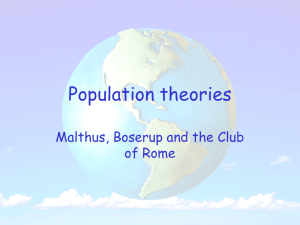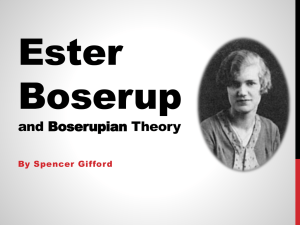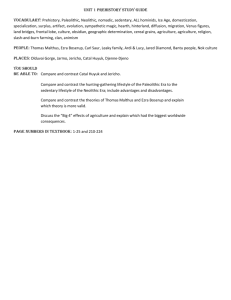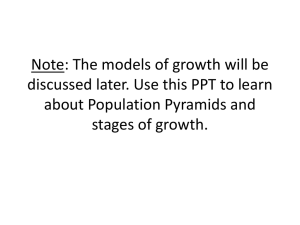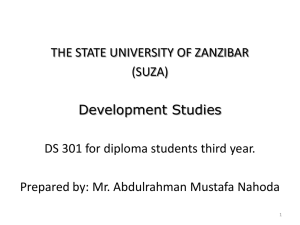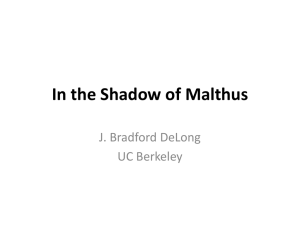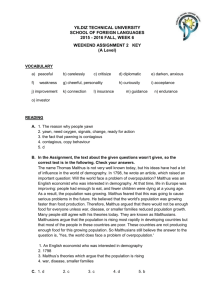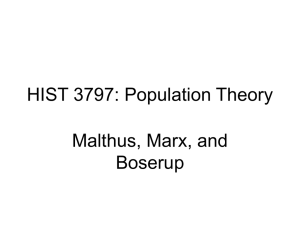Population theories
advertisement
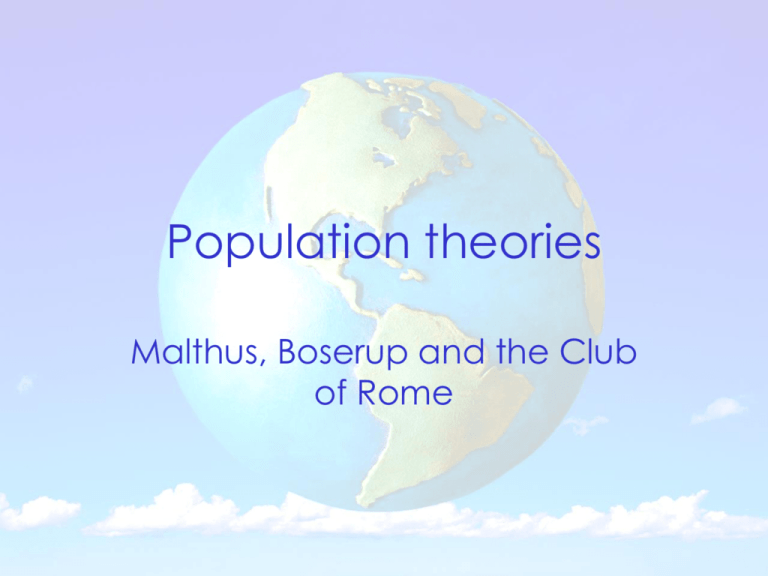
Population theories Malthus, Boserup and the Club of Rome Thomas Malthus • 1766-1834. • Wrote ‘An essay in the First Principle of population’ first published in 1798 • two hundred years ago his ideas were very revolutionary and controversial • World population in 1798 =9 million, now surpassed 6 billion The Core Principles of Malthus: ¤ Food is necessary for human existence ¤ Human population grows faster than our ability to produce food ¤ Humans usually don’t limit their population size voluntarily “preventive checks” in Malthus’ terminology. Malthus recognised that population if unchecked, grows at a geometric rate: 1 2 4 8 16 32 However, food only increases at an arithmetic rate, as land is finite. 1 2 3 4 5 6 and therefore he said…. Malthusian Catastrophe food population TIME War, famine, disease. CHECKS Malthus suggested that once this ceiling (catastrophe) had been reached, further growth in population would be prevented by negative and positive checks. He saw the checks as a natural method of population control. They can be split up into 3 groups…. Negative checks (decreased birth rate)…. Negative Checks -abstinence/ postponement of marriage which lowered the fertility rate. • Malthus favored moral restraint (including late marriage and sexual abstinence) as a check on population growth ( but only for the working and poor classes) Positive checks (increased death rate) • Positive Checks were ways to reduce population size by events such as famine, disease, war increasing the mortality rate and reducing life expectancy. ‘S' Curve - Population Crash Model Was Malthus right? • There has been a population explosion • Africa – repeated famines, wars, food crisis, environmental degradation, soil erosion, crop failure and disastrous floods – so was he right? But….. • Technological improvements which he could not have foreseen • The increased amount of cropland due to irrigation • Reduced population growth as countries move through the DTM The Club of Rome • Group of industrialists, scientists, economists and statesmen from 10 developed countries • Published ‘The Limits to Growth’ in 1972 • Neomalthusians The Club of Rome – basic conclusion…. • if industrialization, pollution, food production and resource depletion continue unchanged, the limits to growth will be reached in the next 100 years. • Sudden and uncontrollable decline in both population and industrial capacity Is the Club of Rome right? • Don’t panic yet! • Doesn’t take human dimension sufficiently into account • Human race is adaptable and innovative • Human responses have changed – e.g. alternative sources of fuel (to replace fossil fuels), GMO seeds to prevent starvation in parts of Asia Ester Boserup 1965 • Boserup believed people have the resources of knowledge and technology to increase food supplies. • Opposite to Malthus • more intensive systems and used when the population grew. • Demographic pressure promotes innovation (irrigation, weeding, crop intensification, better seeds, tools, and techniques). But…. • Boserup admits overpopulation can lead to unsuitable farming practices which may degrade the land • e.g. population pressure as one of the reasons for desertification in the Sahal region (so fragile environments at risk) • Boserup’s theory based on assumption of ‘closed’ society -not the case in reality (migration)
